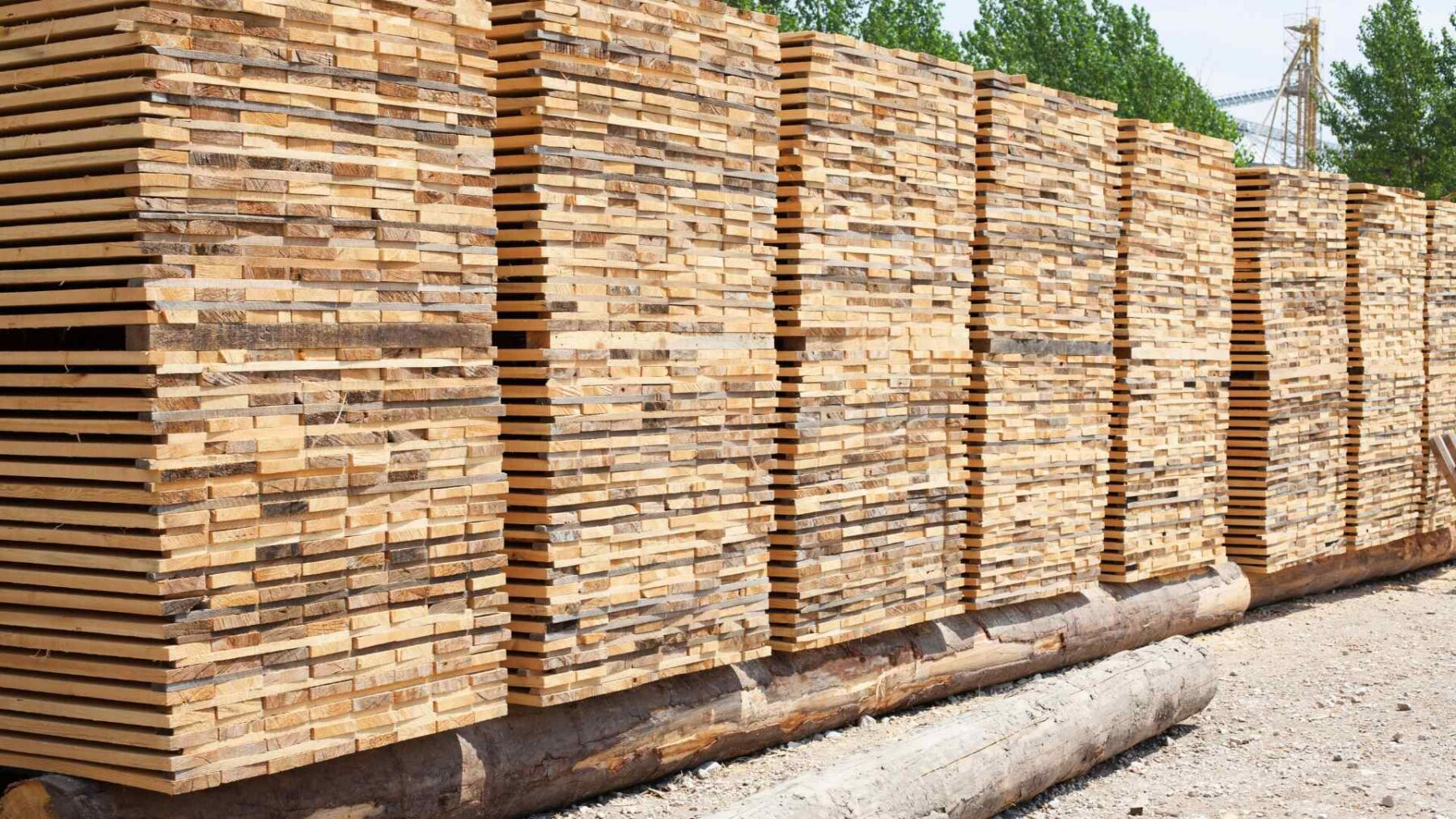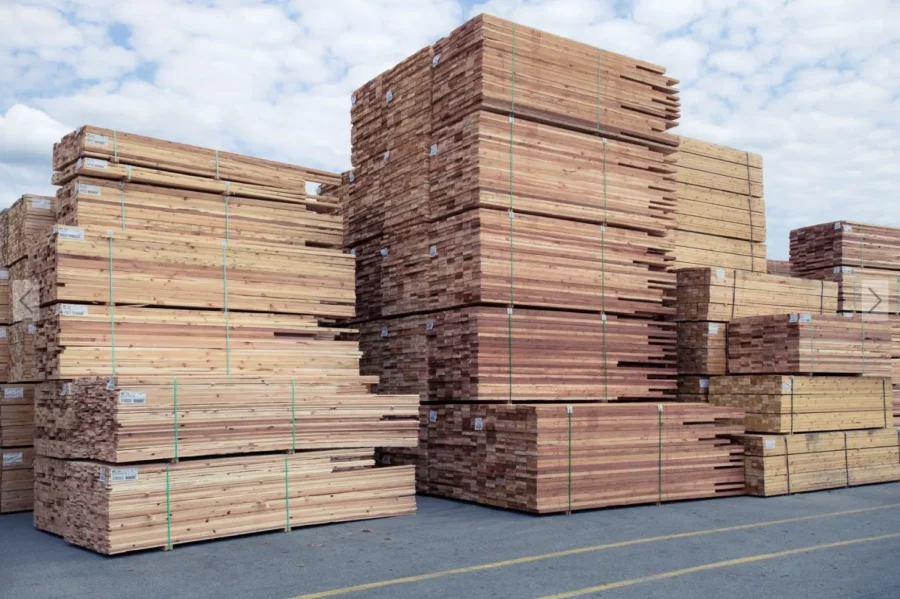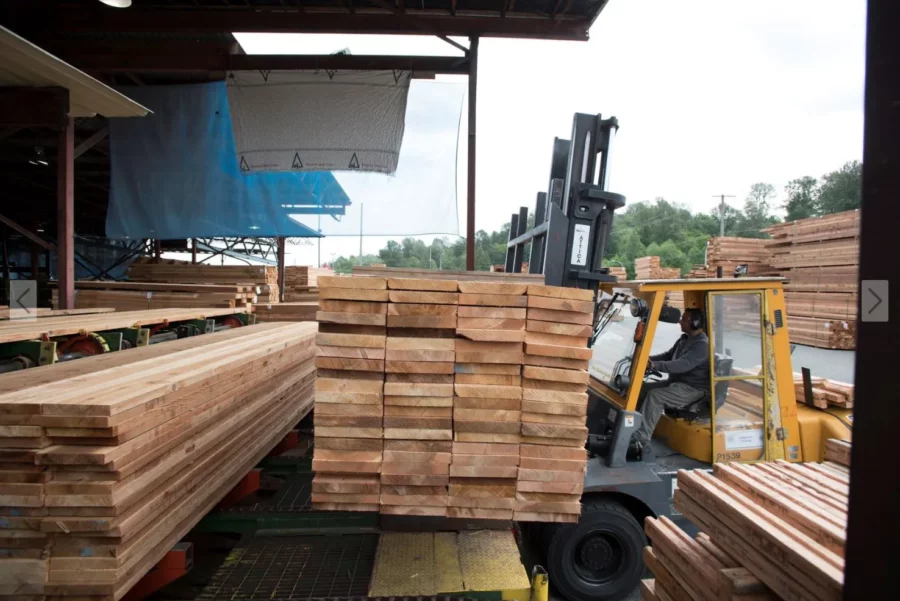Kiln Dried Heat Treated Lumber vs. Pressure Treated Wood vs. Green Lumber: What’s the Difference?

The lumber industry has a wide variety of grades and options when it comes to purchasing dimensional lumber for lumber yards or construction needs. However, despite lumber looking similar, you must understand the differences between grades. There are three types of lumber will discuss in this blog: Kiln Dried Heat Treated Lumber, Pressure Treated Wood, and Green Lumber. From their manufacturing process, advantages disadvantages, and recommended applications, by the end of this blog, you should be able to spot the differences between the three lumber types.

Kiln Dried Heat Treated Lumber
Kiln Dried Heat Treated Lumber (KDHT) is a type of lumber that goes through a drying process in a kiln, where it is heated to reduce its moisture content to a predetermined level.
Advantages:
- Reduced Moisture Content: KDHT lumber has a moisture content of around 10-15%. Having a low moisture level helps make it more stable and less susceptible to warping or twisting.
- Enhanced Strength: The drying process increases the strength-to-weight ratio of the wood, making it suitable for demanding structural applications.
- Insect and Fungus Resistance: The heat treatment eliminates pests, fungi, and other microorganisms that could deteriorate the wood over time. We all want lumber that lasts a lifetime.
Disadvantages:
- Cost: KDHT lumber is usually more expensive than Green Lumber because of the additional processing involved in the kiln drying and heat treatment.
- Energy Intensive Process: The kiln drying and heat treatment process uses a significant amount of energy to achieve the low moisture content and heat levels necessary.
Recommended Applications: KDHT lumber is available in Douglas Fir, Hemlock, and Southern Yellow Pine. It is perfect for interior applications, such as framing, cabinetry, and furniture construction. It is also preferred for export, as the heat treatment meets international phytosanitary requirements, reducing the risk of spreading pests and diseases across borders.
Pressure Treated Wood
Pressure Treated Wood (PTW) is created by injecting chemical preservatives into the lumber under high pressure. The pressure treating process increases the wood's lifespan by making it resistant to decay and insects.
Advantages:
- Rot and Insect Resistance: The chemical treatment protects the wood from decay caused by fungi and insects like termites.
- Outdoor Durability: PTW is ideal for outdoor projects, such as decking, fences, and landscaping, as it can withstand exposure to unpredictable weather.
Disadvantages:
- Handling: With the chemicals used in the treatment process, you should always wear PPE. The dimensional lumber should not be burned or used for certain indoor applications.
- Initial Moisture Content: PTW may have a higher moisture content compared to KDHT lumber, leading to potential shrinkage as it dries out.
Recommended Applications: PTW is available in lumber species like Southern Yellow Pine and Cedar. It is commonly used for outdoor projects like decking, fences, and landscaping.

Green Lumber
Green Lumber, or unseasoned lumber, is wood that is freshly cut from the log. It has not gone through any drying or treatment processes. As a result, it usually contains a high moisture content above 20%.
Advantages:
- Availability and Cost: Green lumber is very common and often more affordable than KDHT or PTW.
- Customization: As it has not gone through any treatment, green lumber can be cut, shaped, and resized to fit your inventory needs.
Disadvantages:
- Moisture-Related Issues: Green lumber is prone to shrinkage, warping, and splitting as it inevitably dries. This potentially causes structural problems in the finished product.
- Insect and Decay Susceptibility: Without any treatment, green lumber may get infected with insects and decay over time.
Recommended Applications: Green Lumber is available in lumber species like Spruce, Fir, and Pine. It is suitable for projects with budget constraints or non-structural purposes. Green Lumber is commonly used for rough framing, temporary structures, and projects where the wood will be processed after drying.

Choosing the Right Lumber for Your Project
Indoor vs. Outdoor Applications
- Kiln Dried Heat Treated Lumber: This type of lumber is suited for indoor projects such as furniture, cabinets, and interior framing. Notably where dimensional stability and low moisture content are crucial.
- Pressure Treated Wood: You will see this type of lumber used for outdoor applications like decks, fences, and landscaping projects. You will choose this type of lumber when resistance to decay, insects, and moisture is essential.
- Green Lumber: When budget is a concern, green lumber is the best choice. It is suitable for woodworking projects that require a higher moisture content, but drying is necessary for performance in other applications.
Environmental Considerations
- Kiln Dried Heat Treated Lumber offers an environmentally friendly option with reduced carbon emissions during the kiln drying process.
- Pressure Treated Wood contains chemical preservatives, raising some environmental concerns. However, modern treatments have become more environmentally friendly than older mixtures.
- While green lumber does not involve chemical treatments, the drying process requires energy, potentially impacting its overall environmental footprint.
Understanding the differences between kiln-dried heat-treated lumber, pressure-treated wood, and green lumber empowers you to make a well-informed decision for your construction projects. KDHT lumber offers stability, strength, and resistance to pests, making it ideal for interior applications. PTW provides durability and protection against decay and insects, making it perfect for outdoor projects. On the other hand, Green Lumber is cost-effective but requires careful handling and is best suited for non-structural or temporary applications.
Remember, when selecting the type of lumber you need to understand the environment you will be using the lumber. KDHT lumber offers stability, strength, and resistance to pests, making it the perfect choice for interior applications. PTW provides durability and protection against decay and insects, making it perfect for outdoor projects that you want to last. Lastly, Green Lumber is cost-effective but requires careful handling and is best suited for non-structural or temporary builds.
If you have any questions regarding which type of wood is best suited for your needs, contact us. We will be happy to assist.


